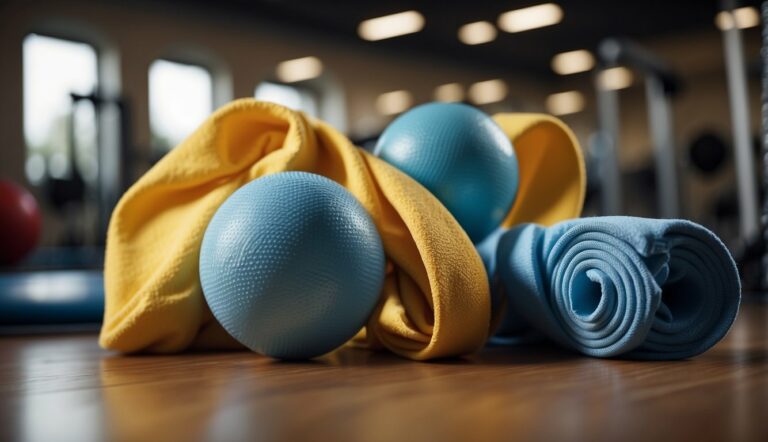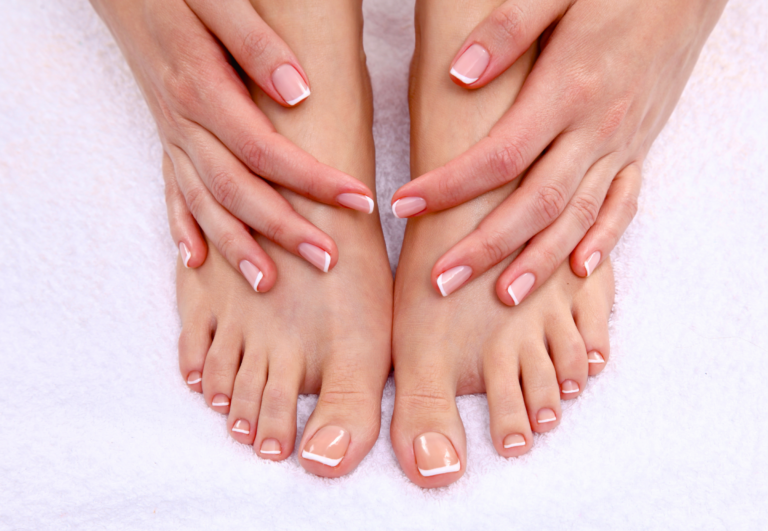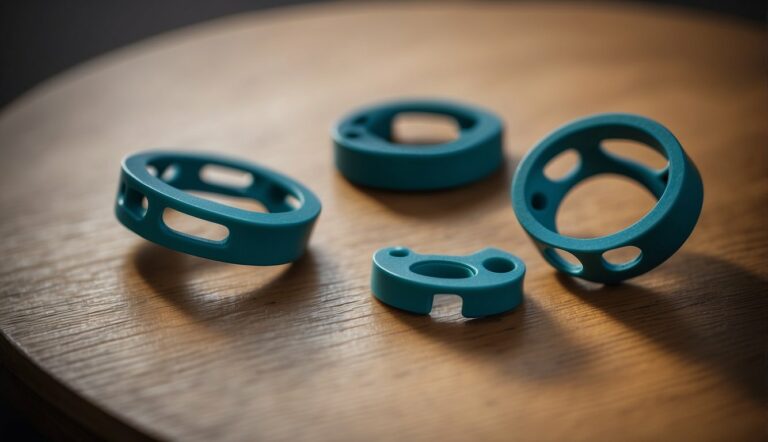How Often Should Toe Spacers Be Replaced? Important Factors To Consider
Toe spacers have become an everyday essential for people looking to improve foot comfort and health. These simple devices, nestled between the toes, help maintain proper alignment and can relieve the pressure that contributes to foot pain. As an avid user and proponent of toe spacers, I understand how vital they are for those who wear them regularly, whether it’s for therapeutic reasons or as part of a daily foot care routine.
The question of when to replace toe spacers is an important one, as the effectiveness of these tools can decline over time. Typically, toe spacers should be examined regularly for signs of wear and tear, like noticeable deformation or a decrease in elasticity. Durable materials can extend their lifespan, but for consistent benefits, I recommend assessing your toe spacers every few months to determine if they need to be replaced.
Keeping toe spacers in good condition is key to ensuring they provide the support necessary for maintaining foot health. Regular replacement not only helps in maintaining foot comfort but also ensures the spacers are hygienic and free from bacteria build-up. For those using toe spacers, this simple maintenance task can go a long way in promoting overall foot wellbeing.
When Should You Replace Your Toe Spacers?
When it comes to maintaining the effectiveness and hygiene of your toe spacers, routines for cleaning and being vigilant about signs of wear are crucial. By keeping track of these factors, you can ensure that your toe spacers will last as long as possible.
Cleaning
Regular cleaning is essential for toe spacers, especially if they’re made of materials like silicone or gel which can easily harbor bacteria. I recommend washing them after each use with mild soap and warm water. For disinfecting, a mix of water and white vinegar in equal parts can be used. After a gentle scrub, rinse thoroughly with water and allow them to air dry.
- Wash: Mild soap + Warm water
- Disinfect: 1:1 Water and White Vinegar solution
- Dry: Air dry completely before next use
Signs of Wear
Over time, toe spacers may show signs of wear, which can affect their durability and longevity. Look for any tears, permanent deformities or a breakdown in the material, as these changes can impair their functionality.
If you notice that your spacers no longer return to their original shape after cleaning, it’s time to replace them. The price of toe spacers often reflects their quality, with higher-priced options generally offering greater durability. However, regardless of the price, regularly inspect your spacers for these signs:
Signs to Look For:
- Tears or cracks
- Permanent deformation
- Material breakdown
Keep this maintenance and replacement guide in mind to ensure that you get the most out of your toe spacers.

A Quick Overview of Toe Spacers
Toe spacers are designed to improve foot health by properly aligning the toes and mitigating common foot-related issues. As an expert in toe spacers, I’ve seen how they can be pivotal in maintaining healthy foot function and comfort.
Types of Toe Spacers
Silicone Toe Spacers: Often the material of choice, silicone toe spacers offer flexibility and can be cleaned easily, promoting better hygiene. They are durable and gentle against the skin, making them suitable for a variety of foot conditions, such as bunions and overlapping toes.
Foam Toe Spacers: Typically softer than silicone, foam spacers may be chosen for short-term use or for those with extremely sensitive skin. However, they may not provide the same level of correction as their silicone counterparts.
- Rigid Toe Spacers: These are designed for maximum toe separation and are often used by those requiring a more aggressive approach to toe realignment, such as individuals with hammertoe.
Benefits of Toe Spacers
- Alleviate Pain: Proper toe alignment can help reduce the discomfort caused by corns, calluses, and bunions. By separating the toes, spacers can relieve pressure and friction.
- Support Footwear Fit: When used correctly, toe spacers can ensure a better fit for shoes, preventing the toes from bunching up and creating uncomfortable pressure points.
- Enhance Balance and Stability: Aiding in the promotion of healthy foot function, spacers encourage the engagement of foot muscles, which can improve balance and posture.
- Preventive Care: Regular use can serve as a preventive measure for individuals with diabetes or those prone to foot-related complications such as plantar fasciitis, stemming from genetics or conditions like flat feet.
Optimal Usage of Toe Spacers
Ensuring proper usage of toe spacers is crucial for maintaining foot function and alignment. This involves selecting the right fit and understanding when to wear them to maximize benefits.
Proper Fitting and Placement
Choosing the right size of toe spacers is essential to avoid discomfort or blisters. I make sure that they fit snugly between my toes, providing a gentle stretch without causing pain. Proper alignment is critical, as the spacers should sit smoothly against my big toe and other digits. Padding may be necessary for additional cushioning, especially if I’m prone to pressure points.
When to Wear Them
I wear my toe spacers during periods of rest or recovery, as they help in realigning my toes and reducing discomfort from conditions such as bunions. They are especially useful after wearing tight shoes or high heels.
While some individuals find benefit in using them during activities like yoga that promote balance and alignment, it’s important to consult a podiatrist to ensure they fit with my orthotics or splint, if I use those for foot health management. Regular compression and relief from toe spacers can aid in improving overall foot performance.
Addressing Common Toe Ailments
Dealing with common toe ailments often involves a combination of addressing structural issues and managing symptoms. Let’s focus on how toe spacers can be applied to these problems for effective relief.
Toe Deformities
Toe deformities like bunions and hammertoes can cause significant discomfort due to the misalignment of the toes.
Toe spacers are useful in providing the necessary separation, preventing the toes from rubbing against each other or the inside of a shoe. This can help mitigate pain and prevent further exacerbation of the deformity. Regularly using toe spacers might also slow down the progression of these conditions.
- Bunions: A bunion is a bony bump that forms on the joint at the base of the big toe. Toe spacers help in maintaining the proper alignment and can provide temporary relief from bunion pain.
- Hammertoes: This condition causes the toe to bend at the middle joint, resembling a hammer. Toe spacers can reduce the rubbing and may help in straightening the toes over time.
Pain and Discomfort Relief
When it comes to foot pain and discomfort, the use of toe spacers can serve as a non-invasive way to provide temporary relief. They can aid in reducing the inflammation caused by corns and calluses, which often develop due to constant friction in tight footwear.
For those who experience foot pain, wearing toe spacers inside socks can result in better toe alignment and distribution of pressure during movement.
- Corns and Calluses: Wearing toe spacers provide a barrier that can minimize the formation and growth of callused skin.
- Inflammation: Separating the toes helps in reducing pressure-induced inflammation.
Maintaining a treatment plan that includes regular use of toe spacers, alongside other recommended care, can enhance foot health and comfort. It is essential to monitor the condition of toe spacers and replace them as needed to ensure they remain effective and hygienic.
Choosing the Right Toe Spacers
When selecting toe spacers, it’s important to consider the material and quality, as well as how they align with individual needs and preferences. This ensures both effectiveness and personal comfort.
Material and Quality
Material: The most common materials for toe spacers are silicone and gel, prized for their cushioning and comfort. Silicone toe spacers, like those from Mind Bodhi, offer durability and can be washed for repeated use. Gel toe separators are known for their soft texture and flexibility, adapting well to the contours of the feet.
Quality: Opt for highly-rated products that demonstrate good craftsmanship. This often directly translates to better foot health and can prevent issues associated with narrow toe boxes found in modern footwear.
- Top Picks:
- Gel Toe Separators: Best for soft, cushion-like support.
- Silicone Toe Spacers: Ideal for long-lasting use.
Individual Needs and Preferences
Foot Conditions: For those managing conditions like hallux valgus or rheumatoid arthritis, it’s crucial to choose toe spacers that provide sufficient support. Consult a healthcare provider for personalized advice.
Shoe Type: Those who wear barefoot shoes may need spacers with less bulk, while athletes may seek additional arch support or mobility.
- Considerations Table:
| Need | Spacer Type | Benefit |
|---|---|---|
| Narrow Shoes | Thinner Spacers | Prevent compression in restrictive footwear. |
| Enhanced Mobility | Flexible Gel | Promote natural foot movement. |
| Arch Support | Structured Design | Support biomechanics during active use. |
Remember, assessing individual needs is key, so if in doubt, speak to a healthcare professional.
Choosing the right toe spacers involves considering both the material and quality as well as individual needs and preferences. By doing so, users can find an option that provides comfort, fits well with their choice of footwear, and supports their unique foot health needs.





